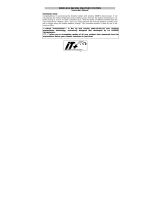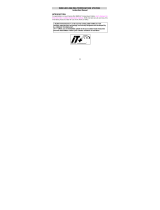
27
4. The outdoor temperature and humidity data from the first transmitter (channel 1) should then be displayed on the
Weather Station. Also, the signal reception icon will be displayed. If this does not happen after 2 minutes, the
batteries will need to be removed from both units and reset from step 1.
5. Insert the batteries in the second transmitter as soon as the outdoor temperature and humidity readings from the
first transmitter are displayed on the Weather Station.
Note : User shall insert the batteries into the second transmitter within 45 seconds after the Weather Station
displays the information of the first transmitter.
6. The outdoor temperature and humidity from the second transmitter and the "channel 2" icon should then be
displayed on the Weather Station. If this does not happen after 2 minutes, the batteries will need to be removed
from all the units and reset from step 1.
7. Insert the batteries in the third transmitter as soon as the "channel 2" icon and outdoor data are displayed on the
Weather Station. Then within 2 minutes, the channel 3 outdoor data from the third transmitter will be displayed
and the channel icon will shift back to "1" once the third transmitter is successfully received. If this is not happen,
user shall restart the setting up from step 1.
Note : User shall insert the batteries into the third transmitter within 45 seconds after the Weather Station
displays the information of the first transmitter.

























